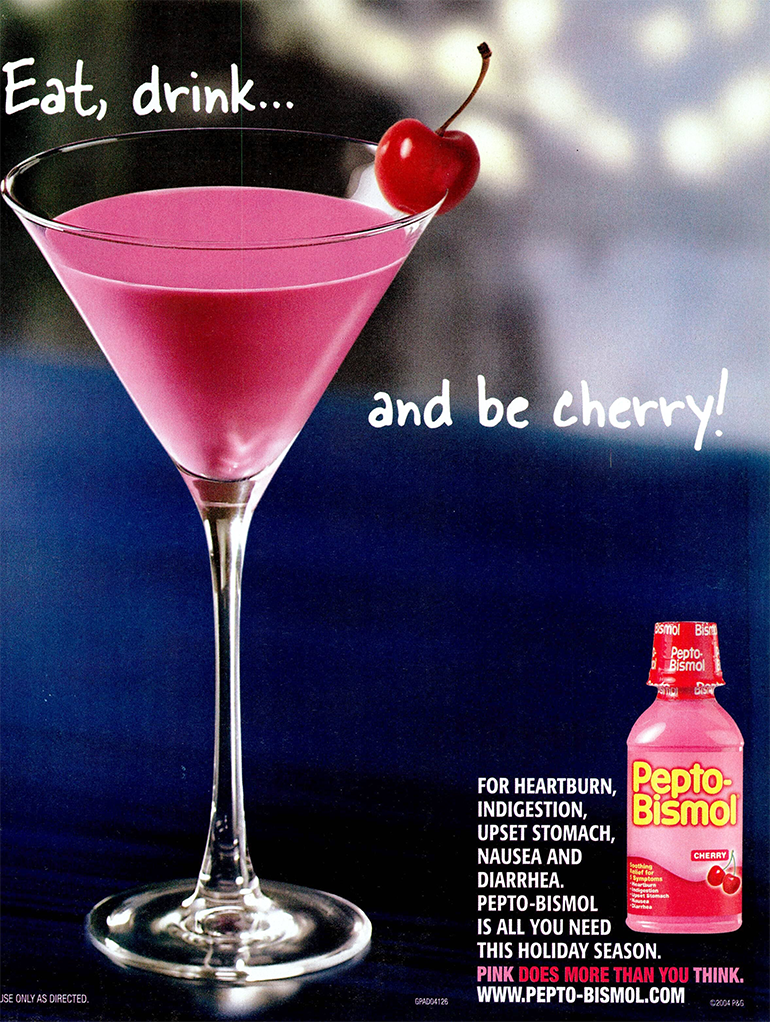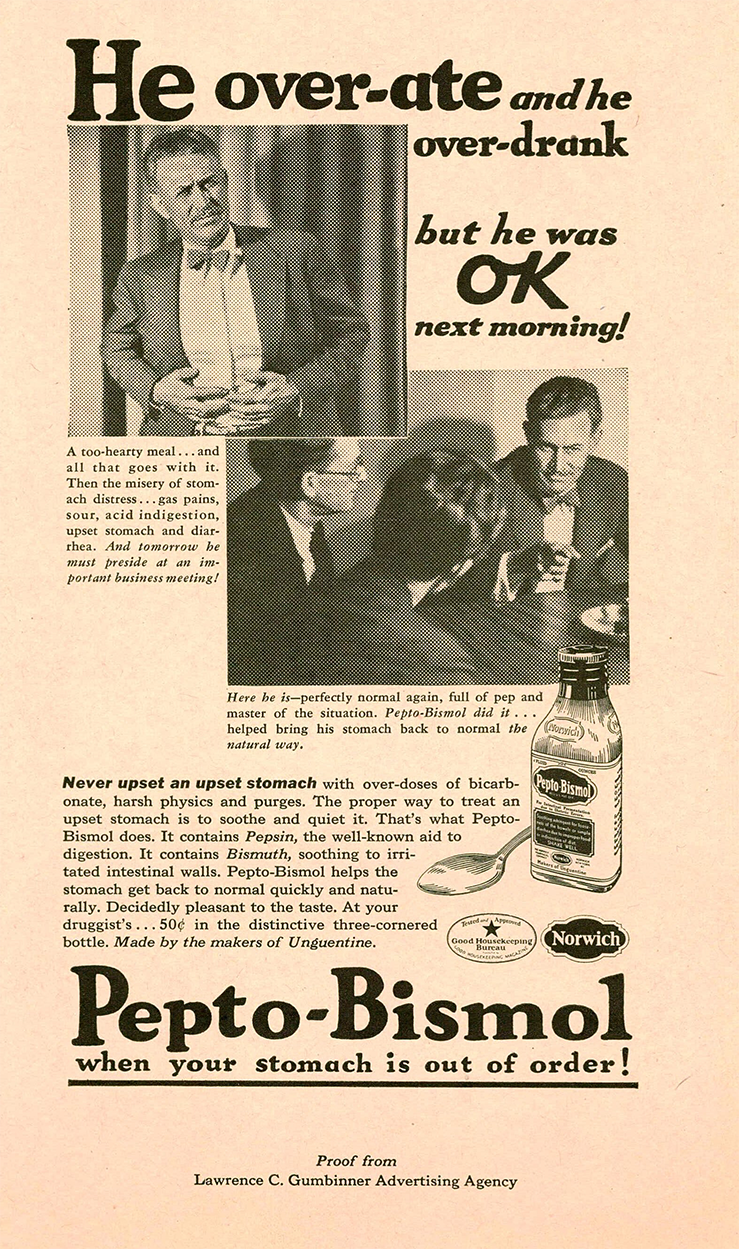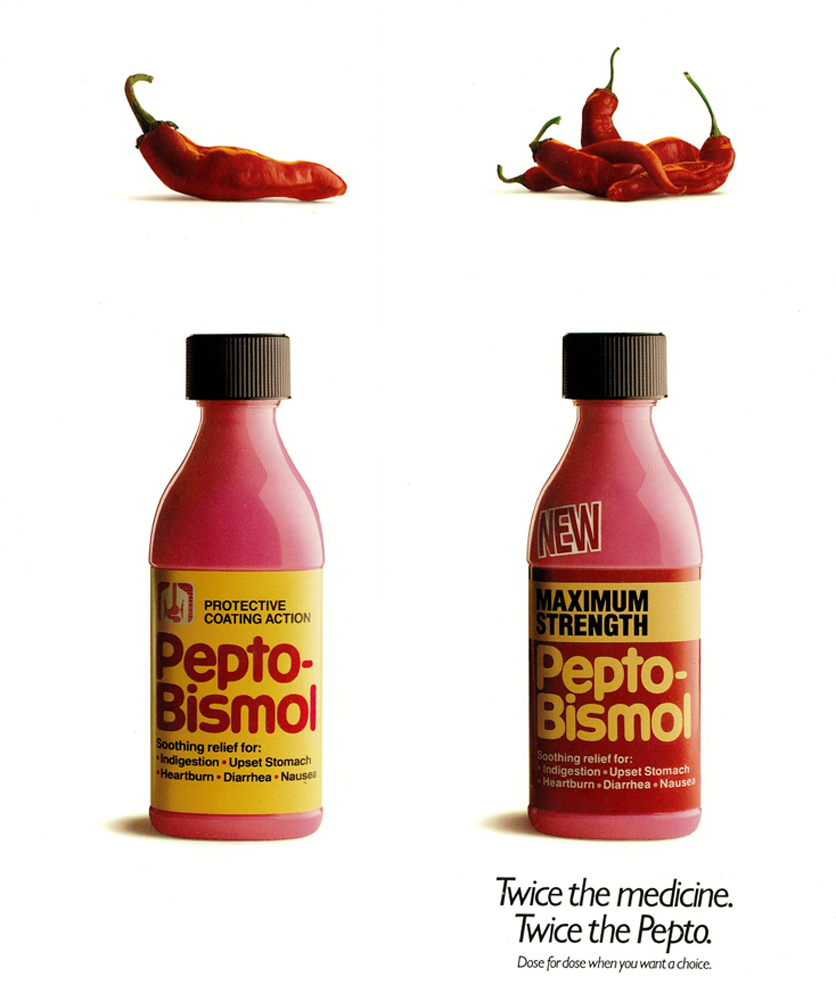Over 100 Years of Pepto History
Pepto-Bismol provides effective relief of multiple stomach symptoms. Available in liquid, chewable tablets, and swallowable caplets, Pepto-Bismol treats diarrhea and provides fast relief of upset stomach, nausea, heartburn, and indigestion due to overindulgence in food and drink.

The formula of the pink medicine we now call Pepto-Bismol was originally developed at the start of the 20th century, when high standards of hygiene and sanitation weren't as widespread as today. Looking to cure a frightening form of cholera that caused severe diarrhea, vomiting, and sometimes death, a doctor concocted a formula in his home that proved effective against these symptoms. The formula (which was different from today's) was made from pepsin, zinc salts, salol, and oil of wintergreen, along with a colorant to make it pink, and he called it Mixture Cholera Infantum. (Researchers would later learn that this illness was caused by a bacterial infection, treatable with antibiotics.)



Today, we think of how Pepto-Bismol soothes the digestive system after we've overindulged at a meal. Or, we think of it as a travel companion that can help soothe stomach upsets associated with traveler’s diarrhea. But in its early days, a different form of Pepto-Bismol did more than comfort; it actually helped treat symptoms of a more serious illness.

Sharing with the World
The invention of what we now know as Pepto-Bismol coincided with other health advances, such as milk pasteurization and public campaigns advocating hand washing.
The early success of Pepto-Bismol presented a production crisis for its inventor, who couldn't make enough product in his home to satisfy demand. He brought his formula to what was then called the Norwich Pharmacal Company in Norwich, New York. Norwich Pharmacal had a way to increaseproduction dramatically – by manufacturing it in 20-gallon tubs.
Norwich added the remedy to its catalog for medical professionals, with the product name Bismosal: Mixture Cholera Infantum. Norwich tinkered with the doctor's formula a bit and advertised the improved product as an "elegant, pleasantly flavored" mixture.



